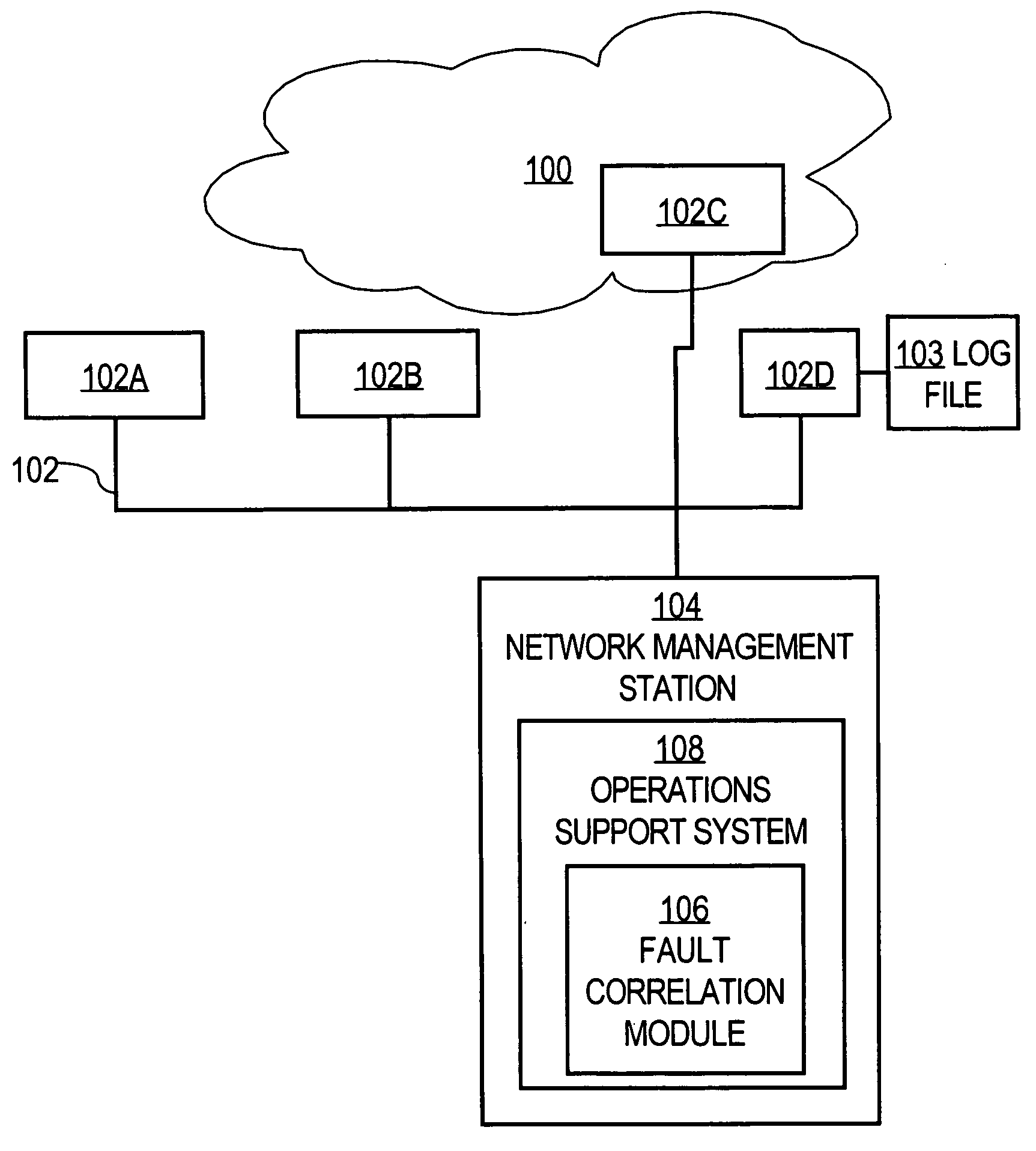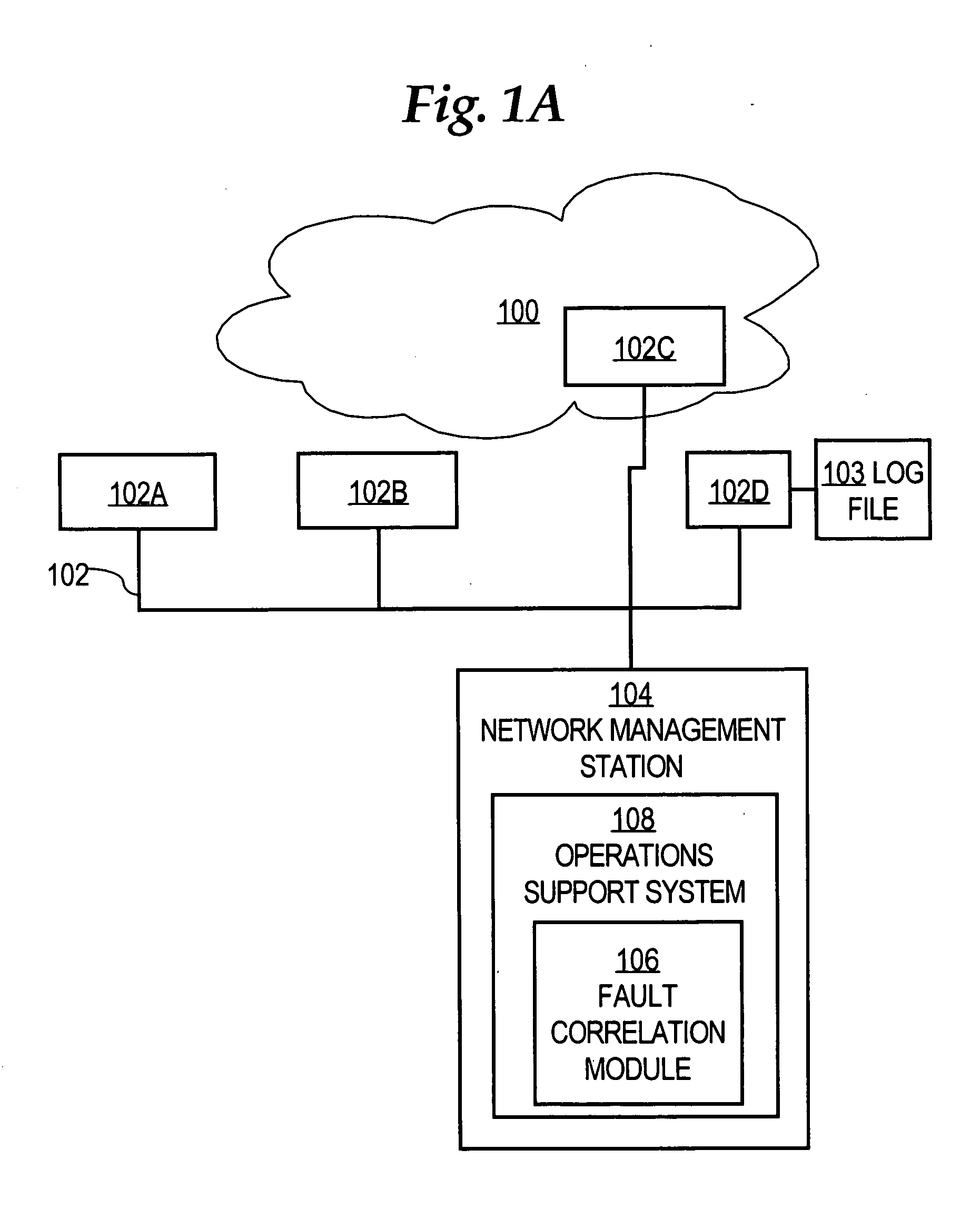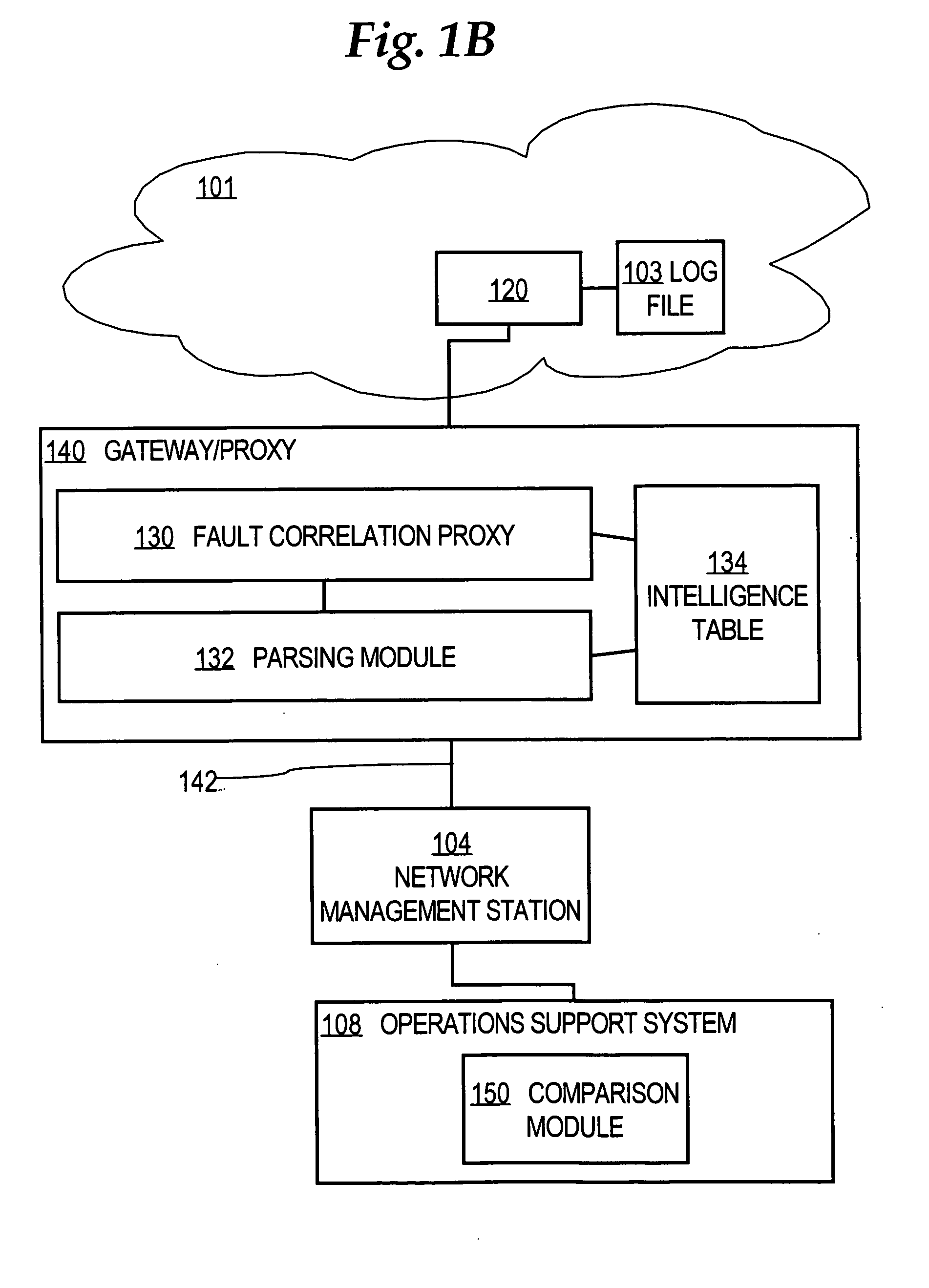Method of labeling alarms to facilitate correlating alarms in a telecommunications network
a technology of telecommunications network and labeling alarms, applied in the field of data processing, can solve the problems of reducing the total cost of maintaining an oss for a network, creating certain management problems, and difficult isolating new alarms, so as to reduce the cost of oss, reduce the potential for erroneous interpretation of alarms, and simplify the effect of processing efficiency of the oss in parsing unique error messages
- Summary
- Abstract
- Description
- Claims
- Application Information
AI Technical Summary
Benefits of technology
Problems solved by technology
Method used
Image
Examples
Embodiment Construction
[0040] A method and apparatus for generating a correlation key value for use in correlating alarms emitted by network elements or system elements in a telecommunications network is described. In the following description, for the purposes of explanation, numerous specific details are set forth in order to provide a thorough understanding of the present invention. It will be apparent, however, to one skilled in the art that the present invention may be practiced without these specific details. In other instances, well-known structures and devices are shown in block diagram form in order to avoid unnecessarily obscuring the present invention.
Alarm Correlation Approach Using Correlation Key Value
[0041] In one embodiment, in a method for generating internal correlation key values for use in correlating alarms generated by network elements in a telecommunications network, an alarm message generated by a network element or system element of the telecommunications network is received. A ...
PUM
 Login to View More
Login to View More Abstract
Description
Claims
Application Information
 Login to View More
Login to View More - R&D
- Intellectual Property
- Life Sciences
- Materials
- Tech Scout
- Unparalleled Data Quality
- Higher Quality Content
- 60% Fewer Hallucinations
Browse by: Latest US Patents, China's latest patents, Technical Efficacy Thesaurus, Application Domain, Technology Topic, Popular Technical Reports.
© 2025 PatSnap. All rights reserved.Legal|Privacy policy|Modern Slavery Act Transparency Statement|Sitemap|About US| Contact US: help@patsnap.com



